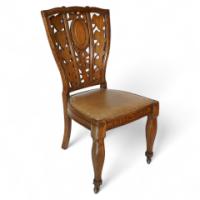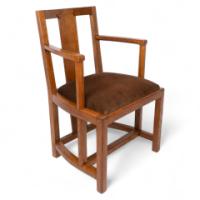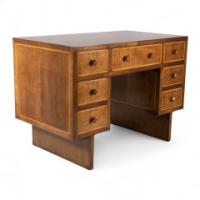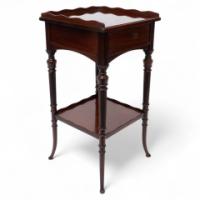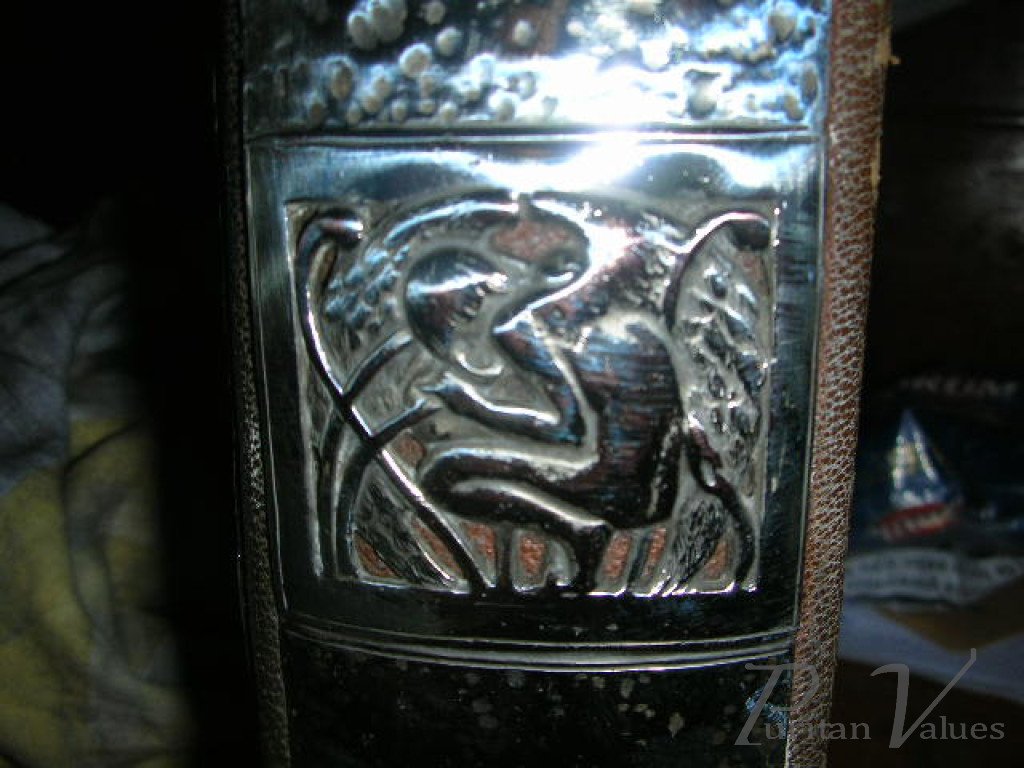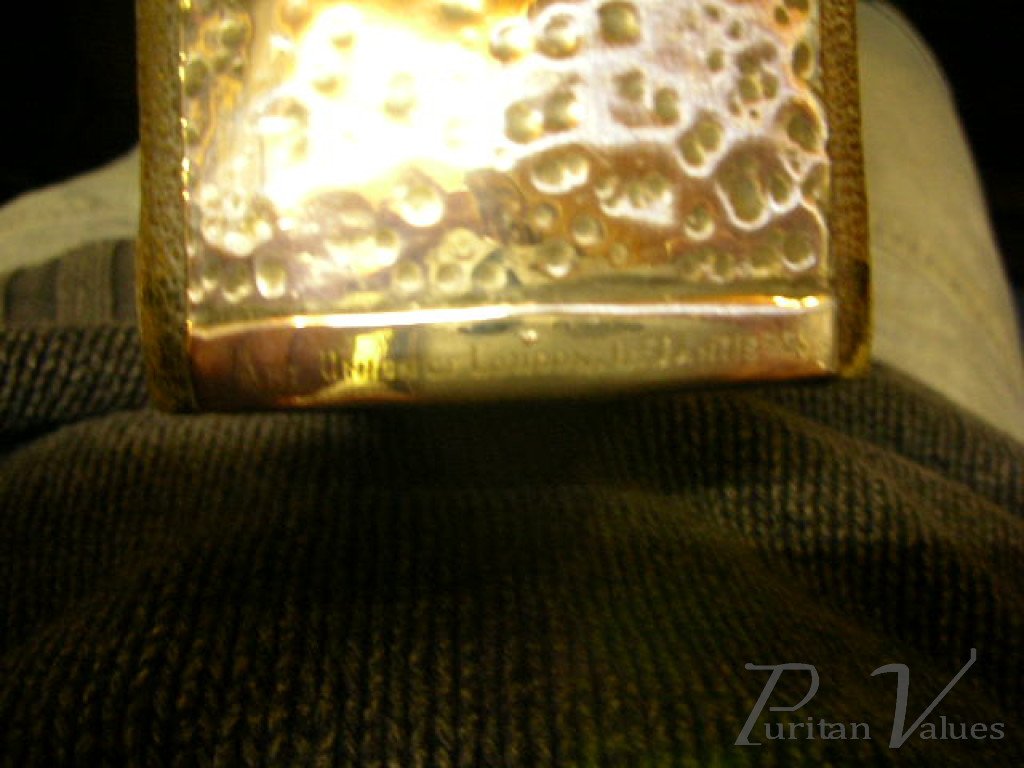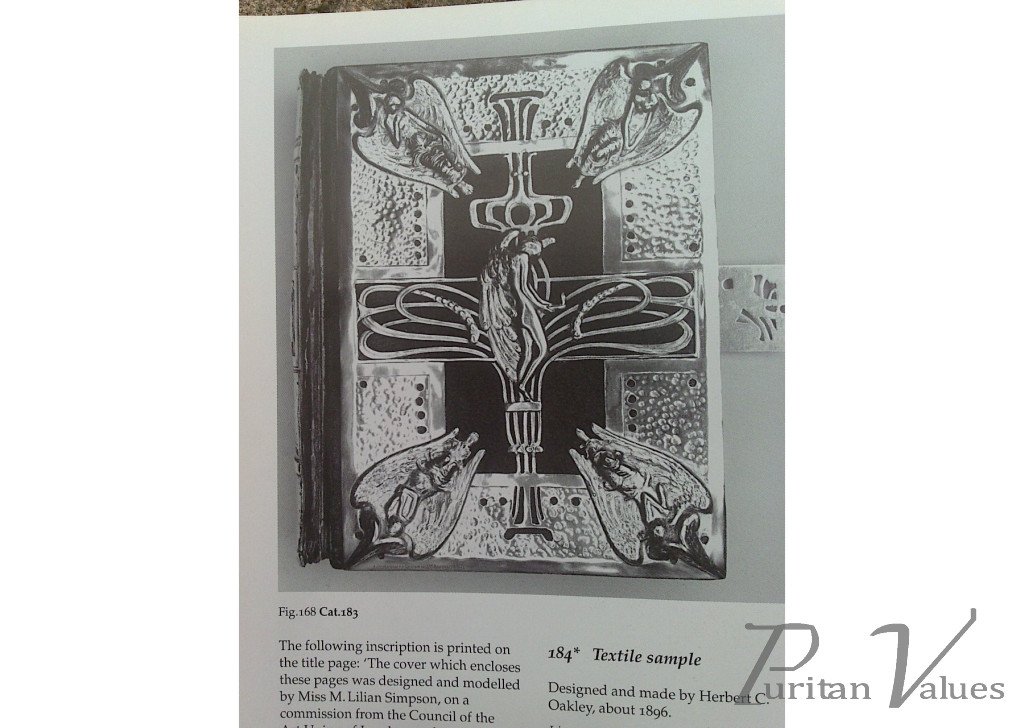Similar available products
Miss M. Lilian Simpson for The Art Union of London. An Album/sketch book with a silver plated cover
SOLD
Width: 8 in (20.32 cm)
About this piece
An Album/sketch book with a silver plated cover designed by Miss M. Lilian Simpson and made by The Art Union of London. Circa 1896. The design relates to the Growth of Life watched over by Angels and Love the central figure kisses the buds into life. Miss Simpson won a gold medal in a National competition of all the schools of Art under the science and Art department in 1894 and it was exhibited in the Royal Academy in 1896. 99% of the pages are still blank and unused. There is another example on display at The Cheltham Art Gallery and Museum and it is also illustrated on page 144 Fig.168 Cat.183 in 'Simplicity or Splendour' by Annette Carruthers and Mary Greenstead, Published by Lund and Humphries.Height 9 3/4", Width 8" Thickness of the spine 2 1/2". The Art-Union of London The AUL was established in 1837 on the recommendation of an 1835 House of Commons Select Committee on the Arts and Manufactures in the UK, which had concluded that access to art exhibitions, art education. And even art patronage by the middling and "operative" classes was a pressing economic and cultural imperative if Britain was to secure international cultural and economic dominance. An art union was recommended as one means to achieve this goal. The first meeting of the AUL was led by four zealous young social radicals: Edward Edwards, writer and later proponent of public libraries in Britain; Henry Hayward, Edwards' brother-in-law; George Godwin, architect and social reformer; and Lewis Pocock, the only upper-class member of the group. 7 more established but less involved individuals joined at the 2nd meeting: Edward Hawkins, Keeper of Antiquities at the British Museum; Benjamin Bond Cabbell, M.P. and patron of the arts; John Britton, publisher, writer. And friend of Godwin; Henry Thomas Hope, M.P. and member of the 1835 Select Committee; Benjamin Hawes, M.P. and member of the 1835 Select Committee; Henry Atkinson. A geologist; and a Mr. Webb, about whom little is known. By the end of 1837 a formal Committee of Management was in place which included Charles Barry, architect (who served on the committee for two decades); William Ewart M.P., chair of the 1835 Select Committee (two decades); N. W. Ridley Colborne, M.P. and member of the 1835 Select Committee (two years); George J. Morant, witness at the 1835 Select Committee (eight years); and the future duke of Northumberland, Lord Prudhoe (two decades). The AUL was governed from its inception by the passionate young social reformers Edwards, Godwin, Pocock, Hayward and several radical Members of Parliament. Though radical, the long-term core of the management committee was also loyal. Of the original 1837 committee members, 9 were still serving in 1859. And from the 1st 3 years of operation 16 committee members served at least 19 years. The radical members of the AUL recognized the need to acknowledge (and harness) the power of the emerging middle class, but they also recognized the significance of retaining aristocratic patrons. In the first 20 years of the AUL, the organization was presided over by 2 peers—the duke of Cambridge, who served from 1841 to 1847. And Lord Monteagle, who served from 1852 to 1866. Its vice presidents included the marquis of Northampton, Lord Compton, Lord Prudhoe, the bishop of Ely, Lord Londesborough, the earl of Arundel and Surrey. And Lord Monteagle (1844–52). Fifteen Members of Parliament served on the committee between 1837 and 1859. This combination of social reformers and the socially prominent seemed politically and culturally unassailable at a time of political and social uncertainty. The AUL started slowly. In 1837 it raised only £480; by 1842, however. Annual subscription revenue stood at almost £13,000—a figure that would remain fairly stable for 20 years. As an incentive for membership, the AUL awarded prize coupons which prizewinners could exchange for a work of art of their choice at one of a number of London art galleries. This system of self-education represented the philosophical core of the AUL. The policy was criticized by the press, by 3 government investigations. And by Prime Minister Robert Peel (on the grounds that it cultivated mediocre taste and the production of mediocre art), but on prize distribution the AUL resolutely and successfully resisted compromise. George Godwin firmly believed in universal access to the fine arts and thus universal agency. He advocated in AUL Reports (which were drafted by him until 1869) that a number of economic, moral, social. And national cultural benefits could accrue from exposing the middle and industrial classes to fine art. He joined a number of witnesses from the 1835 Select Committee in maintaining that a knowledge of the fine arts exerted a civilizing and refining force on Britain's still rough and uneducated masses. Some of Godwin's AUL colleagues shared his extreme reformist views, but to those who had more direct contact with manufacturing his idealism represented a useful solution to more pragmatic concerns. As the 1835 Select Committee suggested. A visually educated workforce could improve British design and enable England to compete more successfully in international manufacturing.



